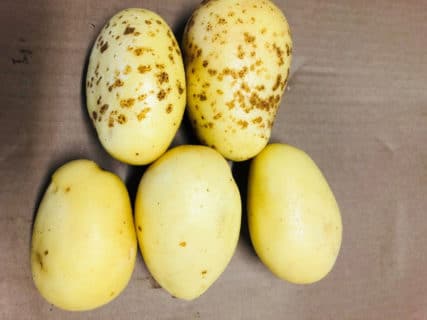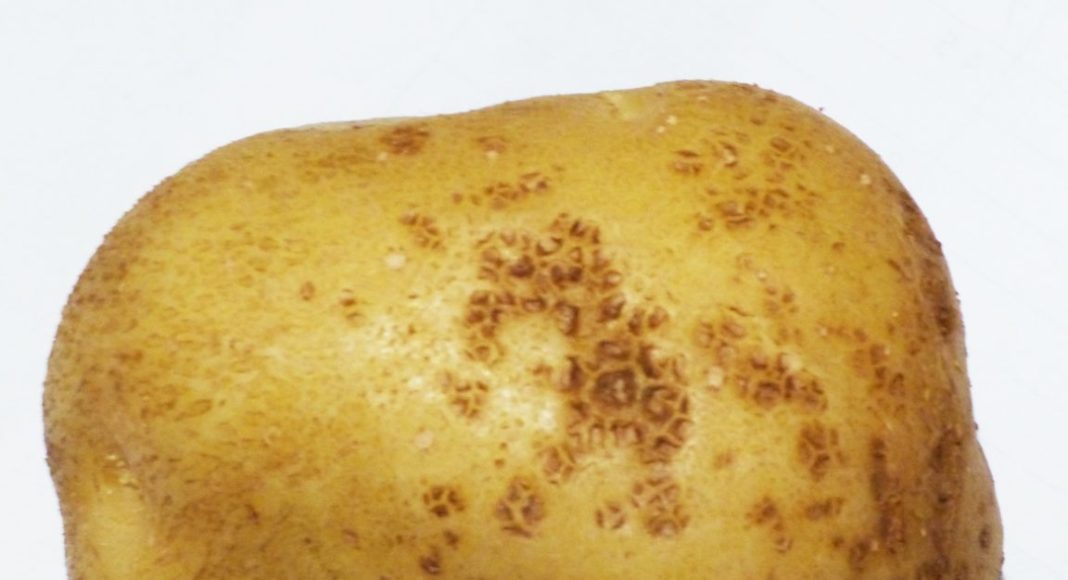Harvesting fresh market and field fry potatoes continued over the long weekend. Quality of both are very good, but yields are variable depending on the field. The storage crop is being top-killed according to the planting date.
The spore traps keep detecting DNA of late blight in Dufferin, Simcoe and Norfolk Counties. This is a very important alert for growers in Dufferin County where there are still fields that will need at least two weeks to reach the finish line.
The late blight outbreak in Norfolk County is under control. There were small circles in the affected field, which is the typical pattern of seed-borne late blight. The fungicide program followed by the grower included late blight specific fungicides. There was no spread of the disease to other fields.
The photos illustrate a physiological skin blemish called russeting that buyers confuse with common scab. The cause is unknown, but Tracy Shinners-Carnelley, a potato pathologist in Manitoba, has obtained funding to try and determine the cause of this problem.

Global researchers have not determined what causes russeting yet, but climate change is thought to be a factor. Hot, dry summers are more common now. The potato skin is sensitive and blemishes easily. Potatoes with minor skin blemishes should not end up in cull piles. The potatoes are safe to eat and flavour does not change because of a skin blemish. How do you convince buyers of this?











